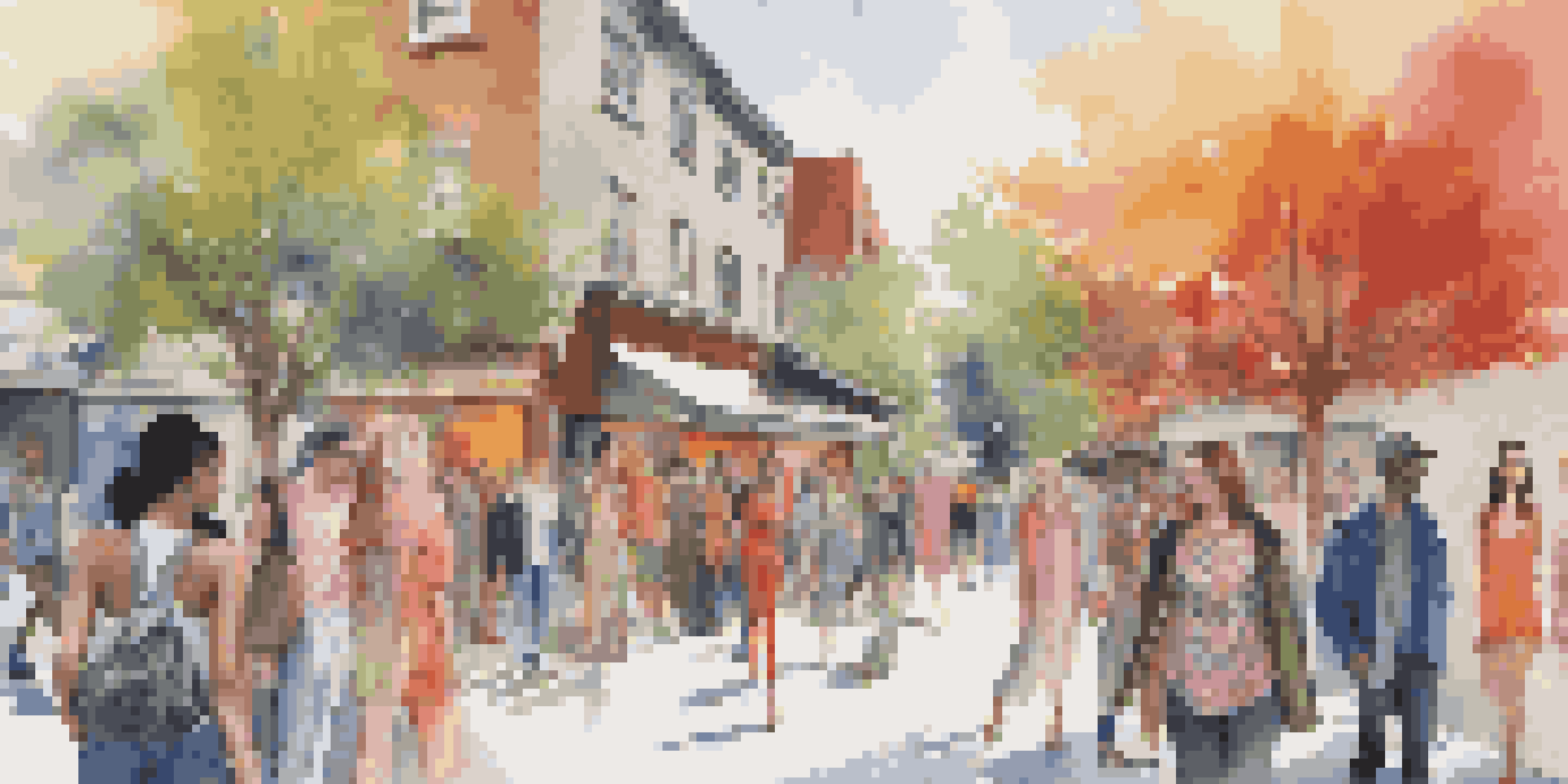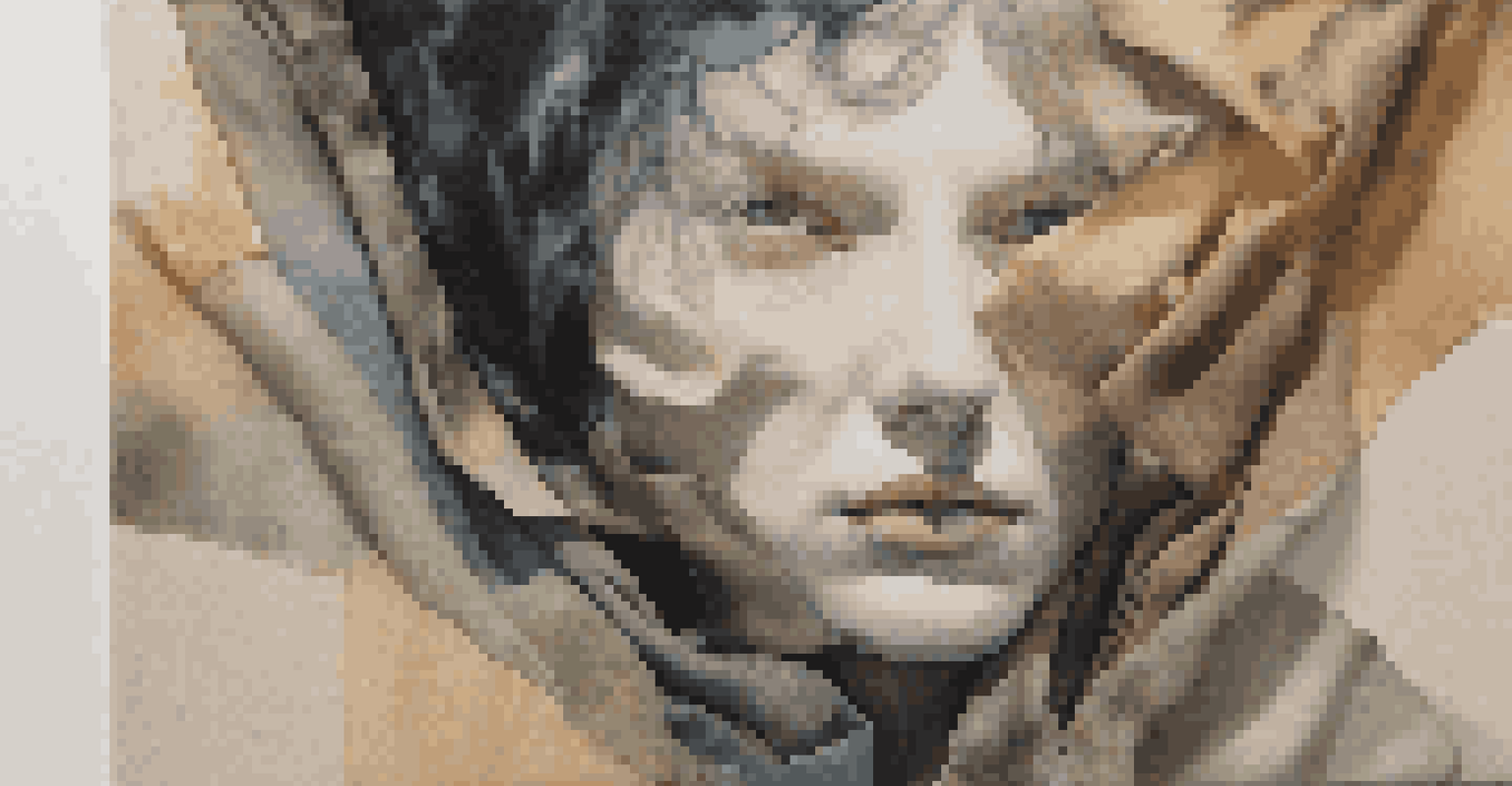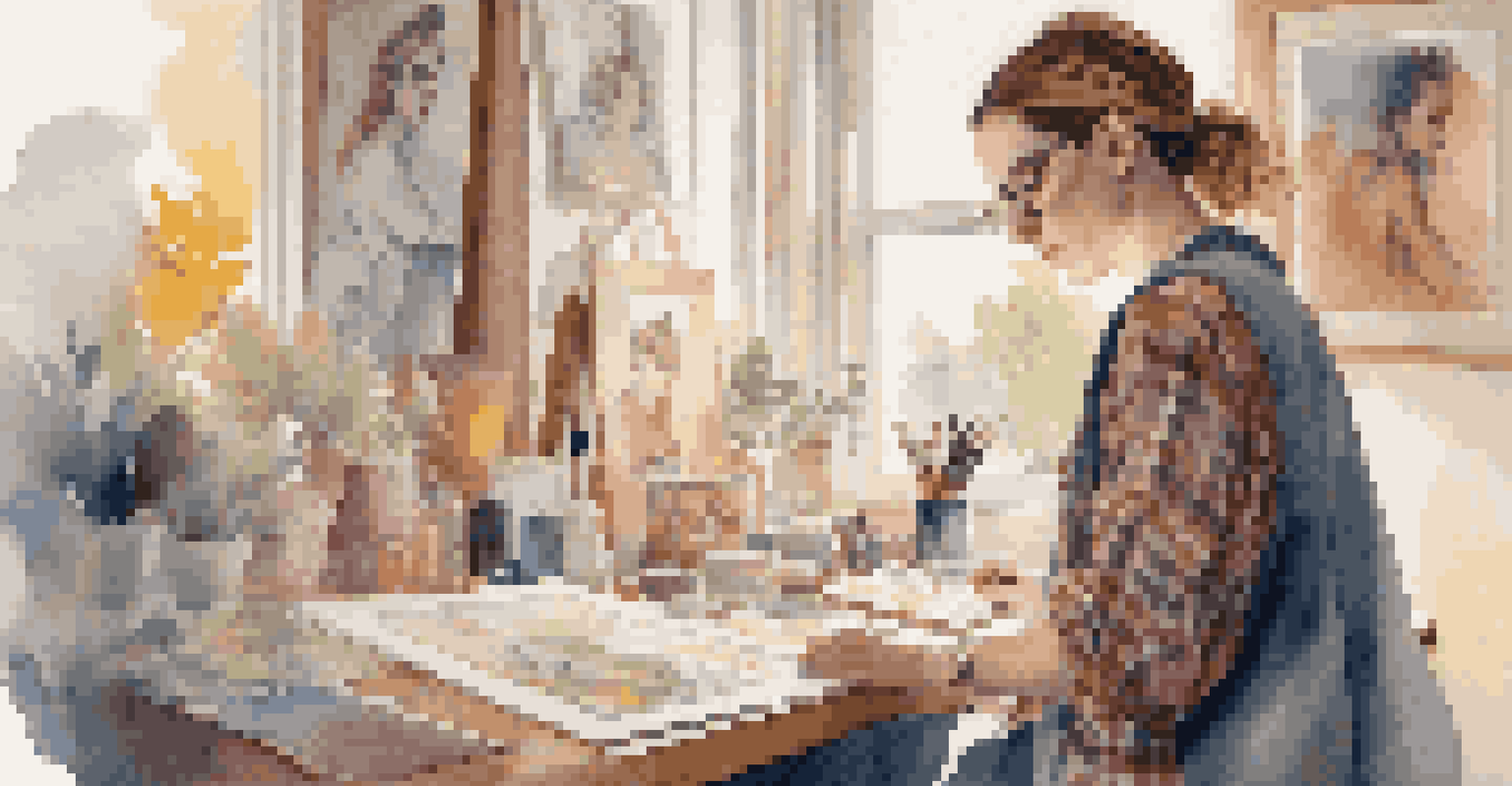Fashion and Art: The Role of Gender in Creative Expression

Understanding the Intersection of Fashion and Art
Fashion and art have been intertwined for centuries, influencing each other in various ways. From the vibrant colors of Impressionist paintings to the bold patterns in contemporary fashion, these two fields often blur the lines of creativity. This intersection offers a unique canvas for artists and designers to express their visions, making it a fascinating area of exploration.
Fashion is the armor to survive the reality of everyday life.
When we think of fashion, we often envision clothing, but it encompasses much more—it's about identity, culture, and personal expression. Similarly, art extends beyond the traditional canvas, inviting us to explore emotions and societal themes through various mediums. Together, they create a rich dialogue that reflects the complexities of human experience.
As we delve deeper into this relationship, we must consider how gender plays a pivotal role in shaping these expressions. The ways in which individuals identify and express their gender can influence their choices in both fashion and art, creating a vibrant tapestry of creativity that challenges norms and celebrates diversity.
The Role of Gender in Fashion Trends
Fashion trends often mirror societal attitudes toward gender, evolving alongside shifts in cultural norms. For instance, the rise of gender-neutral clothing lines signifies a growing acceptance of diverse gender expressions in our society. This shift not only influences what we wear but also how we view ourselves and others within the context of gender.

Historically, fashion has been heavily gendered, with distinct norms dictating what is considered 'masculine' or 'feminine.' However, as more people challenge these conventions, we see a blending of styles that encourages self-expression beyond traditional boundaries. This evolution allows individuals to curate their wardrobe based on personal preference rather than societal expectations.
Fashion and Art Influence Each Other
The interplay between fashion and art creates a unique platform for expressing identity, culture, and personal narratives.
Moreover, fashion designers are increasingly using their platforms to advocate for gender inclusivity, showcasing collections that cater to a broader audience. This not only fosters a sense of community but also empowers individuals to embrace their unique identities, leading to a more inclusive fashion landscape.
Art as a Reflection of Gender Identity
Art serves as a powerful medium for exploring and expressing gender identity. Artists often utilize their work to challenge societal norms, provoke thought, and evoke emotion related to gender experiences. This can manifest in various forms, from visual art to performance, each offering a unique perspective on the complexities of gender.
Art is not freedom from discipline, but disciplined freedom.
For example, many contemporary artists create pieces that confront traditional gender roles, inviting viewers to question their own perceptions. Through bold imagery and innovative techniques, these artists shine a light on the fluidity of gender and the importance of self-identity. Their work often resonates deeply, allowing individuals to connect with their own experiences.
Additionally, art can provide a safe space for marginalized voices, giving them the opportunity to share their stories and perspectives. By elevating these narratives, artists contribute to a broader understanding of gender diversity and foster empathy and acceptance within society.
Fashion Icons and Their Impact on Gender Expression
Fashion icons often serve as influential figures in shaping perceptions of gender expression. From trailblazers like David Bowie to modern influencers like Billy Porter, these individuals challenge traditional gender norms through their distinctive styles. Their bold choices often inspire others to embrace their identities and express themselves freely.
Moreover, these icons contribute to the evolving dialogue around gender in fashion, encouraging discussions about what it means to be masculine or feminine. By defying expectations, they pave the way for others to explore their own styles without fear of judgment. This ripple effect can lead to a more inclusive society where diverse expressions are celebrated.
Gender Shapes Fashion Trends
The evolution of fashion trends reflects changing societal attitudes toward gender, fostering inclusivity and self-expression.
As fashion continues to evolve, the impact of these icons remains significant. They remind us of the power of self-expression and the importance of authenticity in a world that often tries to impose limitations based on gender.
The Influence of Social Media on Gender and Fashion
Social media has transformed the way we perceive and engage with fashion and art, especially regarding gender. Platforms like Instagram and TikTok allow users to share their unique styles and artistic expressions, breaking down traditional barriers. This democratization of fashion empowers individuals to showcase their identities and gain recognition beyond the mainstream.
By sharing their personal stories and experiences, users contribute to a diverse narrative around gender expression. This digital space fosters community, allowing individuals to connect with others who share similar experiences and challenges. As a result, social media becomes a powerful tool for promoting inclusivity and acceptance.
Furthermore, the visibility of non-binary and gender-fluid content creators encourages a broader understanding of gender diversity. Their influence pushes brands and designers to rethink their approach to fashion, leading to more inclusive offerings that cater to all identities.
The Future of Gender and Creative Expression
As we look to the future, the intersection of fashion, art, and gender is likely to continue evolving. With the rise of inclusive brands and a growing awareness of gender diversity, we can expect to see even more innovative expressions in both fields. This evolution is not just a trend; it reflects a fundamental shift in societal attitudes toward identity and self-expression.
Moreover, educational institutions are beginning to embrace this shift, incorporating discussions around gender and diversity into their curricula. By nurturing a new generation of artists and designers who understand the importance of inclusivity, we can foster a more creative and empathetic society.
Social Media Empowers Diverse Voices
Platforms like Instagram and TikTok democratize fashion, allowing individuals to showcase their unique identities and challenge traditional norms.
Ultimately, the future of gender and creative expression lies in collaboration and dialogue. By encouraging conversations that challenge norms and celebrate diversity, we can create a vibrant landscape where everyone feels empowered to express themselves fully.
Conclusion: Embracing Diversity in Fashion and Art
In conclusion, the relationship between fashion, art, and gender is rich and multifaceted. As we explore this intersection, we uncover the profound impact that gender has on creative expression. By embracing diversity in all its forms, we not only enrich our cultural landscape but also foster a sense of belonging for everyone.
It's essential to recognize that fashion and art are not just about aesthetics; they are powerful tools for self-expression and advocacy. As we continue to challenge societal norms and celebrate individuality, we pave the way for a more inclusive future.

By supporting artists and designers who prioritize diversity and inclusivity, we can contribute to a vibrant community that values every voice. Together, let's celebrate the myriad ways in which gender influences fashion and art, and champion a world where creativity knows no bounds.